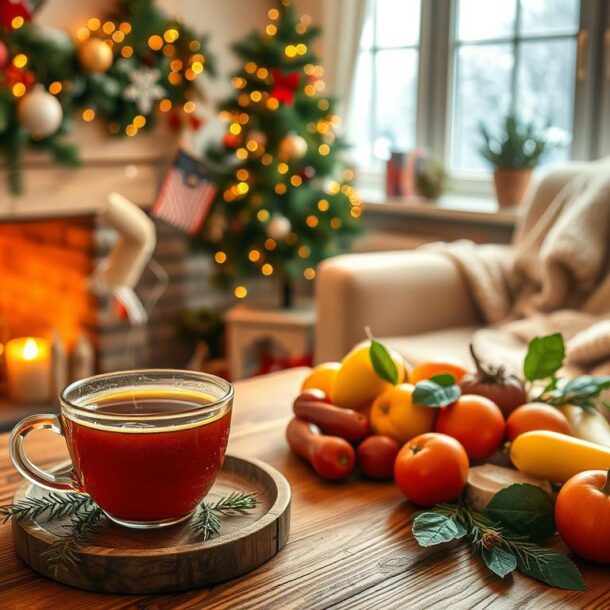
This website uses cookies to ensure you get the best experience on our website. View our Privacy Policy here.

Share this article via:
Please note: This website contains affiliate links. As an Amazon Associate, we earn from qualifying purchases at no additional cost to you.
.
Are you tired of seeing your organic waste go to landfills? It could be helping your garden instead. Composting turns kitchen scraps and garden trimmings into nutrient-rich soil. This can make your plants grow better.
Composting is a natural way to recycle nutrients and help your garden. It breaks down organic matter into compost. This compost improves soil, saves money on fertilizers, and makes your garden healthier. It’s also a way to reduce waste and lower your carbon footprint.
Composting is easy, whether you’re a gardening pro or a beginner. This guide will show you how to start composting at home. You’ll learn how to set up and maintain your composting system. Get ready to turn waste into garden gold and feel good about it.
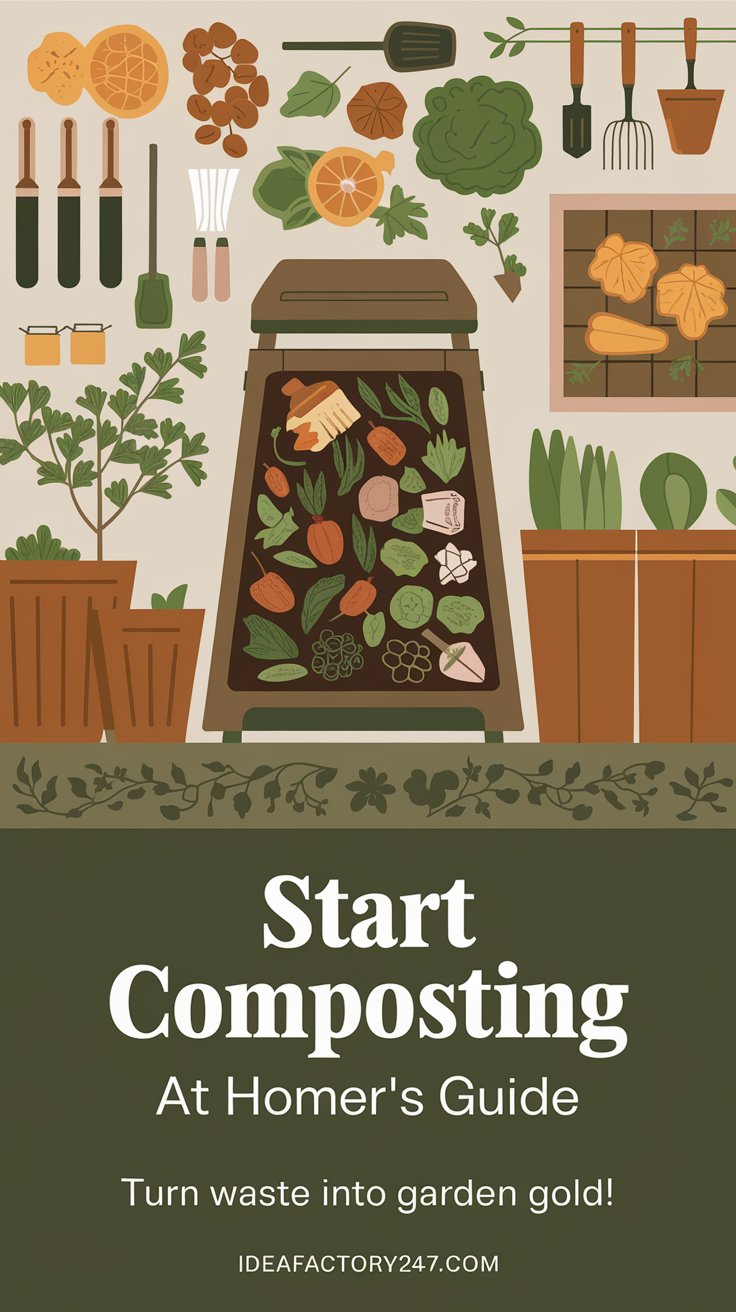
Composting turns ordinary waste into a nutrient-rich soil called humus. Microorganisms break down materials like garden trimmings and fruit scraps. They release valuable nutrients in the process.
Composting is the controlled breakdown of organic matter. It’s a key part of sustainable living. It reduces waste in landfills and saves space.
The compost also improves soil, helps plants grow, and retains water better.
The composting science is amazing. Microorganisms like bacteria and fungi eat the organic matter. They create heat, breaking down the materials into a dark, nutrient-rich humus.
Composting is a simple, yet powerful way to help the environment. It turns kitchen and garden waste into a valuable soil amendment. This contributes to a more sustainable future and makes your garden thrive.
Composting at home is rewarding and good for the planet. You need the right tools and a good spot. For small yards, use a compost bin or tumbler. Big areas can handle a garden compost pile or bay. Always pick a shaded spot to keep the compost moist.
You’ll need a composter, like a bin, tumbler, or electric unit. Don’t forget gardening gloves to protect your hands. A compost starter helps the process start, and a bucket for collecting materials. You’ll also need a rake, wheelbarrow, and a compost thermometer to check the temperature.
Place your composting area away from houses and fences to avoid pests. Think about how easy it is to get to and how often you’ll use it. With the right tools and spot, you’ll make great compost for your garden.
| Composting Equipment | Purpose |
|---|---|
| Compost Bin | Contains and facilitates the composting process |
| Compost Tumbler | Speeds up the composting process through regular turning |
| Gardening Gloves | Protects hands during composting activities |
| Compost Starter | Introduces beneficial microorganisms to kickstart decomposition |
| Compost Thermometer | Monitors the temperature of the compost pile for optimal conditions |
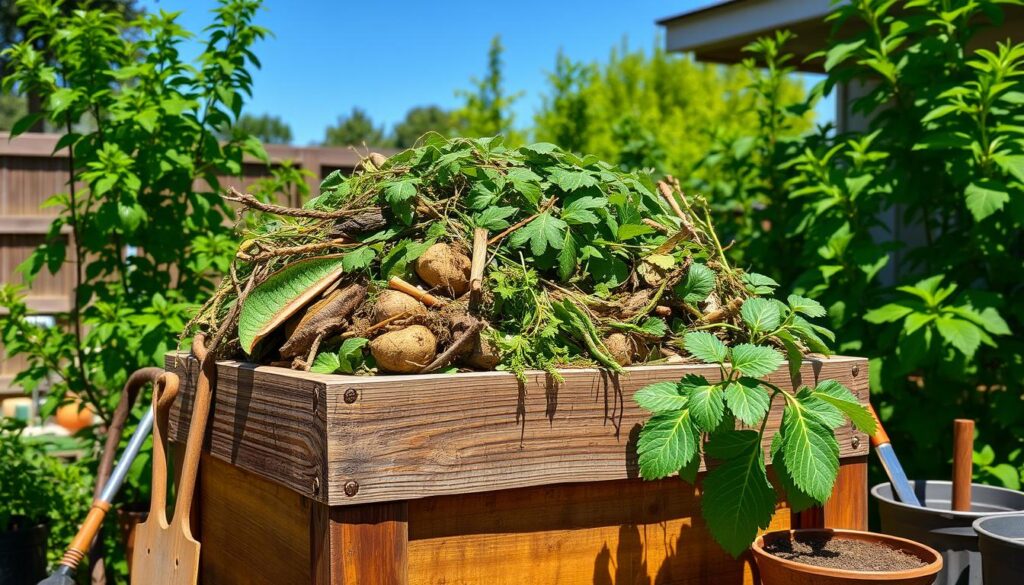
Composting is a great way to cut down on waste and make rich soil for your garden. To start, you need to know what materials go into a compost pile. It’s all about mixing nitrogen-rich “green” stuff with carbon-rich “brown” stuff.
Green materials, like fruit and veggie scraps, tea leaves, coffee grounds, and grass clippings, are high in nitrogen. Brown materials, such as straw, paper, cardboard, dry leaves, and woody prunings, are high in carbon. By layering these, you create the best spot for decomposition.
Start with a 5-6 inch base of brown materials. Next, add a layer of green materials on top. Keep alternating between brown and green layers. Make sure to water each layer lightly to keep it moist.
Try to keep a 2:1 ratio of brown to green materials. Smaller items, like shredded paper or finely chopped twigs, break down faster. Finish with a brown layer on top to keep it warm and moist.
| Green Materials (Nitrogen-rich) | Brown Materials (Carbon-rich) |
|---|---|
|
|
By following these easy steps, you’ll be making a great compost pile. It will give your garden the nutrients it needs to thrive.
Composting at home is a great way to cut down on waste. But, it’s important to know what to put in your compost bin and what to avoid. This ensures you get nutrient-rich soil for your garden.
Some gardeners say to avoid adding meat and bones to small compost bins. They can attract pests and smell bad. Also, be careful with items labeled “compostable” or “biodegradable.” These terms don’t always mean they break down well at home.
| Compostable Items | Non-compostable Materials |
|---|---|
| Fruit and vegetable scraps, coffee grounds, eggshells, grass clippings, leaves, paper, cardboard, wood chips | Diseased plants, pet droppings, cooking fats, glossy paper, weeds with seeds, treated timber, large branches |
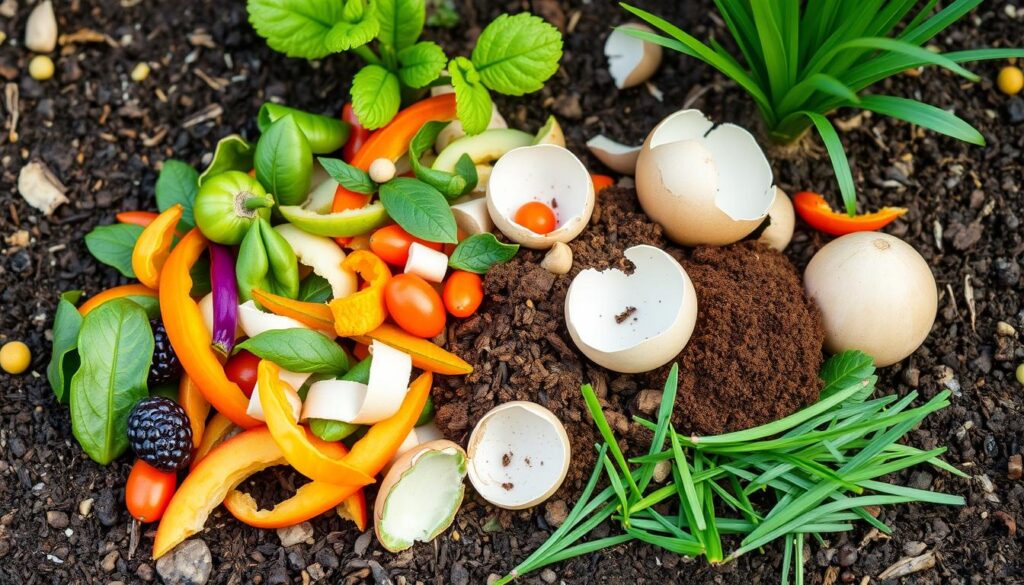
By carefully choosing what goes into your compost, you can make a rich, healthy soil. This will help your garden grow strong and support the environment. Happy composting!
To keep your compost pile healthy, balance moisture, temperature, and aeration. This balance is key to composting’s benefits, like reducing waste and enriching soil.
Keep the compost temperature between 140-160°F (60-71°C) for best decomposition. If it’s too hot, add dry leaves or shredded paper. For a cooler pile, add green materials like grass clippings.
Check the pile’s moisture often. It should be damp, like a wrung-out sponge. Add water if it’s dry, or brown materials if it’s wet to avoid odors.
Odors or sliminess mean the pile lacks air. Fix this by aerating, adjusting the mix, and checking moisture. Pests can be kept away by covering the pile and balancing the mix.
| Compost Maintenance Factor | Ideal Range | Troubleshooting Tips |
|---|---|---|
| Moisture Levels | 40-60% | Add water if too dry, mix in brown materials if too wet |
| Temperature | 140-160°F (60-71°C) | Add brown materials if too hot, add green materials if too cool |
| Aeration | Turn or mix every 1-2 weeks | Use a garden fork or compost aerator, incorporate air vents |
| Odor Control | Minimal to no odor | Increase aeration, adjust green-to-brown ratio, cover the pile |
By monitoring and adjusting moisture, temperature, and aeration, you can have a thriving compost pile. It will transform your waste into rich soil for your garden.
Composting turns kitchen and garden waste into a valuable soil conditioner. It’s a simple way to help the environment. By composting, you can cut down on landfill waste and make your soil healthier.
It’s great for gardening practices and takes a few months to get right. Your compost will be ready when it’s dark brown and crumbles easily.
Composting is good for everyone, whether you’re new or experienced. It helps reduce waste and makes your plants grow better without chemicals. Plus, it creates jobs, helping the economy and the planet.
So, why not start composting today? See how your waste can become something useful. This eco-friendly practice will make your gardening sustainable for years.
Composting turns organic waste into a nutrient-rich fertilizer. It’s done through the action of microorganisms. This process creates humus, a dark, fertile layer.
It’s important because it boosts plant growth and cuts down on landfill waste. It also helps retain water and improve soil health. Plus, it’s a cheaper way to fertilize compared to store-bought options.
Home composting reduces greenhouse gas emissions and improves soil structure. It recycles nutrients and cuts down on landfill waste.
You’ll need a composter, gardening gloves, compost starter, and a bucket. Also, a rake, wheelbarrow, and compost thermometer are helpful. Choose a location based on accessibility and how often you’ll use it.
You can compost fruit and veggie scraps, coffee grounds, and eggshells. Grass clippings, leaves, paper, cardboard, and wood chips are also okay. But, avoid diseased plants, pet droppings, cooking fat, glossy paper, weeds with seeds, treated timber, and large branches.
Keep the compost pile at 140-160°F (60-71°C). Add brown materials and turn if it’s too hot. Add green materials and turn if it’s too cool. Water if it’s dry, and add brown materials if it’s too wet or smells bad.
Turn or aerate the compost every 1-2 weeks. Use garden stakes or plastic pipes to improve air circulation.
If the compost smells or is slimy, aerate it and adjust the green-to-brown ratio. For tumblers, turn the compost every time you add new materials. Monitor moisture levels and add water if needed.
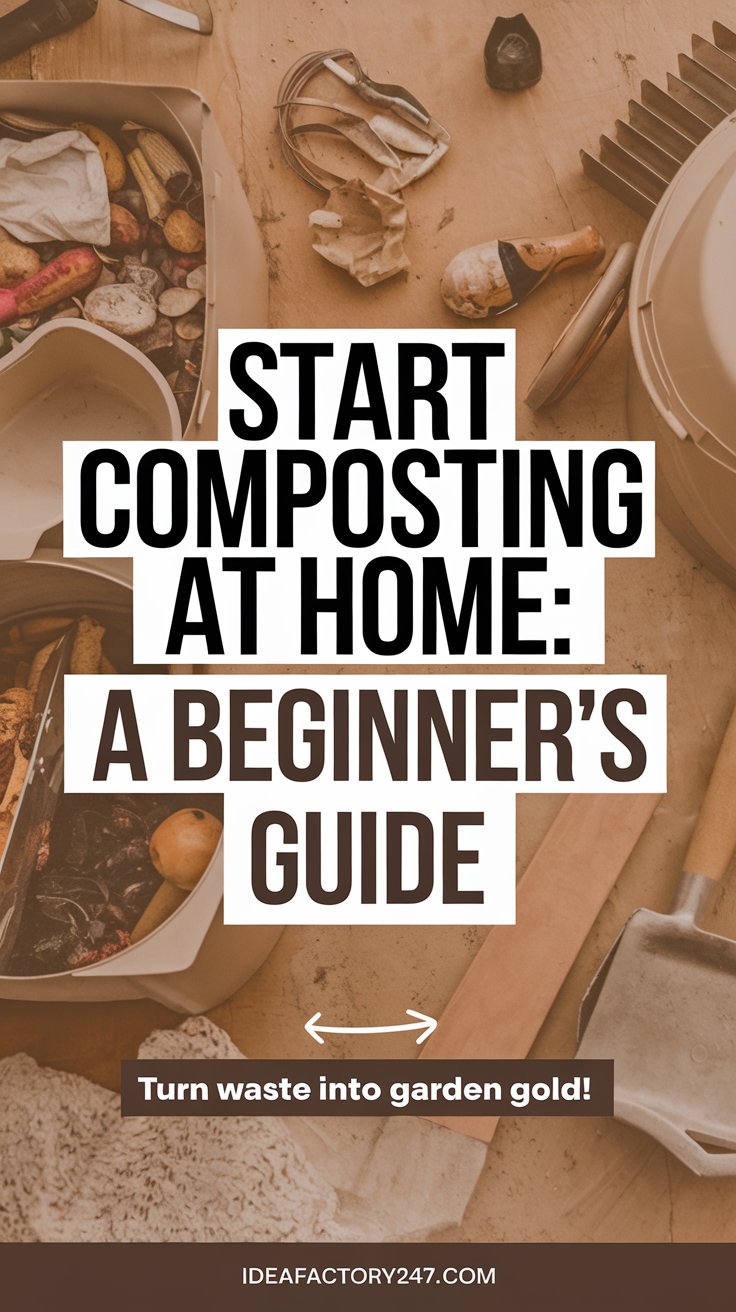
Please note: This website contains affiliate links. As an Amazon Associate, we earn from qualifying purchases at no additional cost to you.
.
Share this article via:

This website uses cookies to ensure you get the best experience on our website. View our Privacy Policy here.